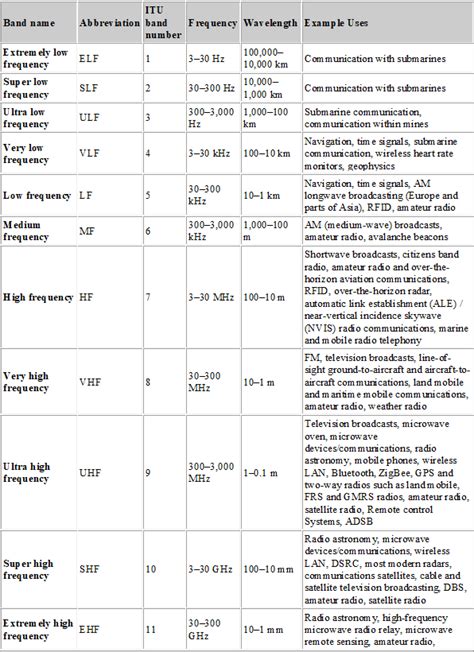The electromagnetic spectrum is a vast and complex range of frequencies that encompass various forms of electromagnetic radiation, from low-frequency, long-wavelength forms like radio waves to high-frequency, short-wavelength forms such as gamma rays. Understanding the electromagnetic spectrum is crucial for numerous fields, including physics, engineering, astronomy, and telecommunications. The spectrum is typically divided into seven bands, each with distinct characteristics and applications. These bands include, from longest wavelength to shortest, radio waves, microwaves, infrared (IR) radiation, visible light, ultraviolet (UV) radiation, X-rays, and gamma rays.
Introduction to the Electromagnetic Spectrum

The electromagnetic spectrum is a continuum of all electromagnetic waves arranged by frequency and wavelength. The longer the wavelength, the lower the frequency, and vice versa. This fundamental relationship is described by the speed of light equation in a vacuum, c = λν, where c is the speed of light, λ (lambda) is the wavelength, and ν (nu) is the frequency. Each band of the spectrum has unique properties and interacts differently with matter, leading to a wide array of applications and phenomena.
Radio Waves
Radio waves are the longest wavelength and lowest frequency band of the electromagnetic spectrum, with wavelengths ranging from 1 millimeter to thousands of kilometers and frequencies as low as 3 kHz. They are used extensively in telecommunications for broadcasting, mobile phones, and satellite communications due to their ability to travel long distances and penetrate solids, albeit with some attenuation. Radio waves are also crucial for radar technology, which uses these waves to detect and locate objects.
| Electromagnetic Band | Wavelength Range | Frequency Range | Applications |
|---|---|---|---|
| Radio Waves | 1 mm - thousands of km | 3 kHz - 300 GHz | Telecommunications, Broadcasting, Radar |
| Microwaves | 1 mm - 1 m | 300 MHz - 300 GHz | Cooking, Wireless Communication, Radar |
| Infrared (IR) Radiation | 780 nm - 1 mm | 300 GHz - 400 THz | Thermal Imaging, Heating, Night Vision |
| Visible Light | 380 nm - 780 nm | 400 THz - 800 THz | Vision, Lighting, Laser Technology |
| Ultraviolet (UV) Radiation | 100 nm - 380 nm | 800 THz - 30 PHz | Sterilization, Water Purification, Spectroscopy |
| X-rays | 0.01 nm - 10 nm | 30 PHz - 30 EHz | Medical Imaging, Materials Analysis, Security Screening |
| Gamma Rays | Less than 0.01 nm | Higher than 30 EHz | Medical Treatment, Sterilization, Scientific Research |

Practical Applications and Interactions

Each band of the electromagnetic spectrum has its unique interactions with matter, leading to a diverse range of practical applications. For instance, microwaves are not only used for cooking but also play a crucial role in wireless communication systems. Infrared radiation is utilized in thermal imaging and night vision devices, exploiting its ability to be emitted by all objects at temperatures above absolute zero. Visible light, the only band visible to the human eye, is fundamental to life and technology, from photosynthesis to laser technology.
Ultraviolet (UV) Radiation and Beyond
Ultraviolet radiation, though invisible to the human eye, has significant applications, including sterilization, water purification, and spectroscopy. X-rays, with their high energy, are used in medical imaging to visualize the internal structure of the body and in materials analysis. Gamma rays, the most energetic form of electromagnetic radiation, are employed in medical treatments, such as cancer therapy, and in scientific research, including the study of celestial objects and high-energy particle physics.
Key Points
- The electromagnetic spectrum is a continuum of electromagnetic waves, arranged by frequency and wavelength.
- Each band of the spectrum has distinct characteristics and applications, from telecommunications and heating to medical imaging and scientific research.
- Understanding the interactions between electromagnetic radiation and matter is crucial for harnessing the potential of each band.
- Applications of the electromagnetic spectrum are diverse and pervasive, influencing numerous aspects of modern life and technology.
- The study and application of the electromagnetic spectrum continue to evolve, driven by advances in technology and our understanding of the universe.
In conclusion, the electromagnetic spectrum, encompassing seven primary bands, is a foundational concept in physics and engineering, with far-reaching implications and applications across various disciplines. From the mundane to the sublime, the electromagnetic spectrum plays a critical role in our daily lives, technological advancements, and our understanding of the cosmos.
What are the primary applications of the electromagnetic spectrum?
+The primary applications include telecommunications, heating, lighting, medical imaging, spectroscopy, and numerous scientific research areas, among others.
How does the electromagnetic spectrum interact with matter?
+The interaction varies by band, with longer wavelengths like radio waves penetrating solids and shorter wavelengths like gamma rays being highly ionizing and capable of breaking chemical bonds.
What is the significance of the electromagnetic spectrum in modern technology?
+It is fundamental, enabling technologies such as wireless communication, medical imaging, laser technology, and more, which are crucial to modern life and continue to evolve with advancements in technology.



